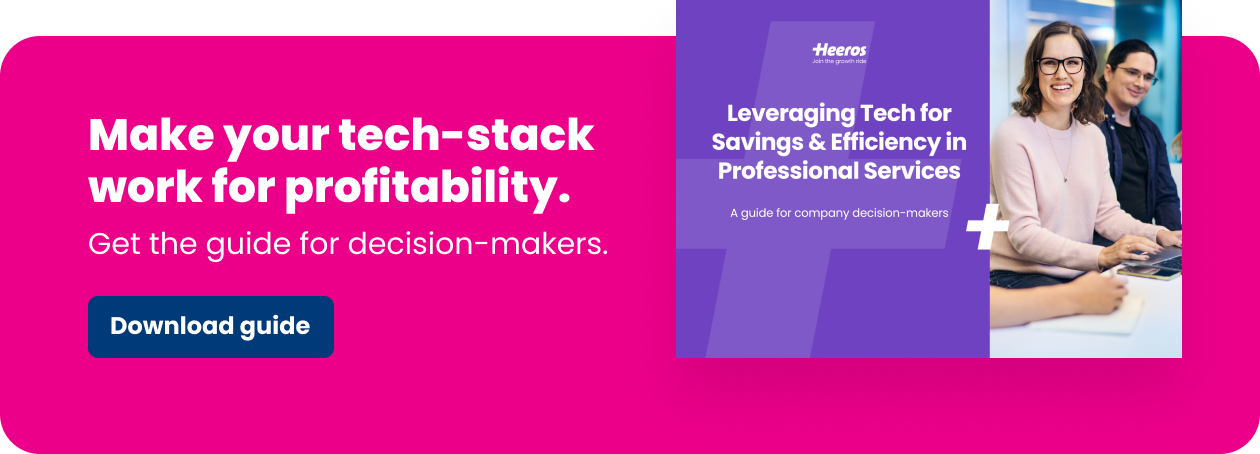Blog
CFO’s tech cost optimization guide for Professional Services
In the face of rising interest rates and inflation, CFOs are strategically guiding their organizations. Recent surveys highlight the delicate balance between growth and cost management. While optimism about net profit growth prevails, cost optimization emerges as a top priority. Key challenges include attracting and retaining talent, managing rising wages, and navigating economic uncertainties.
Central to any CFOs objective of long-term viability is streamlining existing technology and software. That means cutting inefficiencies caused by multiple tools and insufficient integrations into essential systems like accounting, BI reporting and HR.
The 6 steps covered in this article
Step 1: Identify the Pain Points
Step 2: Review current tech stack from CFO’s point of view
Step 3: Assess processes in relation to tech stack for cost optimization
Step 4: Elevate operational excellence with Integrations and API
Step 5: Master Reporting for Data-Driven Insights
Step 6: Align Future Software Updates with the Company's Vision
Step 1: Identify the Pain Points
Identifying organizational pain points is essential, especially when dealing with disjointed software that affects operations extensively.
Major pain points include wasted time and other resources due to managing multiple software and tools, which lead to inefficiency, costly errors, and missed opportunities. Pain points to look for include but are not limited to:
- Missed billable hours due to fragmented systems result in financial loss.
- Disjointed software hinders teamwork and causes delays, creating productivity bottlenecks.
- Disorganized data can cause lost or unprotected files, harming efficiency and security.
- Lack of updated financial data from connected systems can lead to poor decisions and forecasting is more challenging for top management.
Addressing the identified pain points is the first step towards cost optimization and efficiency, setting the stage for employing targeted strategies and tools to mitigate them effectively.
Step 2: Review current tech stack from CFO’s point of view
Start by conducting a comprehensive review of your current tech setup to uncover inefficiencies and outdated systems. What are the software used, what is the cost, who is using them, are there overlaps?
It's vital to grasp the cost implications of maintaining your existing tech stack compared to the investment in a new unified software solution. You can use for example Heeros PSA pricing as a directional benchmark. A detailed cost-benefit analysis can illuminate potential savings and productivity enhancements and overlapping functionalities and unfitting processes can be discovered. The key lies in embracing the right technology.
Key Actions:
- Evaluate current tech for inefficiencies.
- Perform a cost-benefit analysis to identify potential savings.
Next, we will look at some of the most critical processes in professional services landscape where there is room for cost-savings through technology.
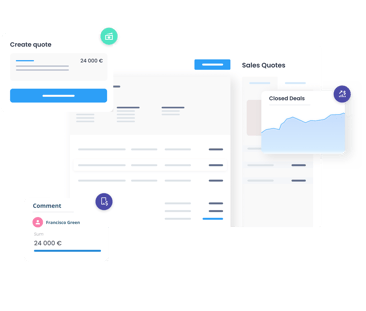
Step 3: Assess processes in relation to tech stack for cost optimization
Now you have your tools and software mapped out and an alternative, centralized option. Let’s dig in deeper – what kind of processes do they cater to and are you as a CFO satisfied with current status?
Optimize Sales Processes for Efficiency
Efficiency in sales operations is pivotal for a professional services business's financial health. This step emphasizes streamlining sales processes to drive growth and maintain a competitive edge in a dynamic market. It strongly advocates for digitizing the entire sales pipeline, including sales activities, notifications, documents, and collaboration tools, to empower sales teams in navigating process complexities.
Unifying sales management, pipeline, estimates, and all related activities into a unified system such as Heeros PSA, digitizes the entire process, aligning sales operations with project management. This not only improves the bottom line but propels the organization forward in a competitive landscape.
This holistic management oversees the customer lifecycle from lead to deal, aligning teams, and enhancing client relationships while fostering a seamless transition between sales and project execution stages.
Transform Time Management for Cost Savings and Efficiency
For a CFO it is not news that time management is paramount.
Efficient time management extends beyond tracking hours; it includes hour balance, vacation/leave management, hours approval processes, and integration with HR and salary software. This comprehensive approach ensures time is strategically invested, enhancing transparency and efficiency.
When combined with resource planning, time tracking offers significant cost-saving benefits:
- Efficient workforce allocation reduces labor costs.
- Real-time budget oversight prevents overruns.
- Data-driven efficiency leads to cost savings and efficiency.
- Enhanced accountability optimizes resource use for cost savings.
Streamline Invoicing for Cost Control
Invoicing is a pivotal aspect of your business's financial health. This step underscores the critical need to streamline the invoicing process to enhance cost control, making project cost and expense management transparent, efficient, and seamlessly integrated into your operations.
Manual handoffs between project management and accounting systems consume time and introduce error risks. Your business requires a solution that eliminates these bottlenecks, enabling project managers to concentrate on their primary responsibilities. Streamlined invoicing functions simplify the reimbursement of project costs and expenses, allowing for effortless processing with just a few clicks. This automation enhances operational efficiency and maintains invoicing consistency.
Moreover, a comprehensive audit trail from sales opportunities to bookkeeping provides transparency and traceability. Auditors value this feature, as it ensures the accuracy and integrity of your financial records.
In essence, this step is about more than just sending out invoices and receiving bills; it's about financial control, client satisfaction, and operational efficiency. By embracing streamlined invoicing, your business can navigate the complexities of cost management with ease, ensuring that every financial transaction aligns with your strategic goals.
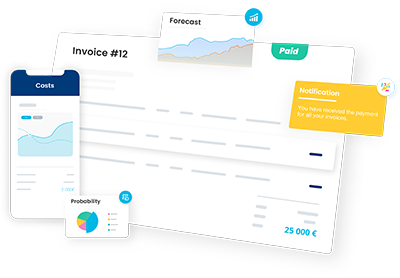
Automate e-Invoicing and Ensure Regulatory Compliance
Streamlined invoicing pays of fully when e-invoicing processes are in place. This step emphasizes the strategic importance of e-invoice automation, which offers a seamless and error-free approach with numerous benefits. See our practical guide on e-invoicing.
E-invoice automation streamlines processes, eliminating manual invoicing's time-consuming and error-prone nature. It ensures strict compliance with evolving regulatory requirements, including the global Peppol standard, enabling secure electronic document exchange worldwide.
Additionally, e-invoice automation simplifies the automated process of integrating purchase invoices for example, into your PSA, eliminating manual data entry and reducing error risks. This ease of managing project-related costs and reimbursing them on client invoices further enhances efficiency and reduces the potential for errors.
In conclusion, e-invoice automation is a strategic necessity that minimizes costly errors, enhances financial transaction credibility, and promotes financial transparency, leading to significant cost and time savings, ensuring compliance and a competitive edge.
Step 4: Elevate operational excellence with Integrations and API
Integrations have the power to make or break your cost-optimized tech stack. They are a key for operational excellence as they streamline workflows and eliminate productivity-hindering information silos. Integrating APIs with 3rd party vendors enables seamless software communication, offering real-time insights for agile decision-making and supercharging the PSA with BI-reporting tools and similar functionalities.
This section underscores three core areas where seamless integrations noticeably elevate operational efficiency: streamlined workflows, increased transparency and readiness to future development.
Streamlined workflows
While facilitating communication between various tools and platforms used within an organization, integrations significantly reduce the need for manual data entry tasks. Workflows become more streamlined and employees can use the saved time for more strategic initiatives as opposed to tasks that can be automated. Usually there’s more to integrations than just handling a simple export-import -task but they can cover data conversions or discrepancies between systems.
Related to the manual tasks, reducing them means less errors and less time spent solving the following issues. Manual data entry is especially prone to human errors, and from a cost optimization perspective surely you as a CFO want to remove these operational bottlenecks.
Increased transparency
Organizational silos are usually not wanted and while integrating systems isn’t a golden ticket to more collaborative and transparent operations, it does play a role in it. Especially from CFO perspective getting a holistic overview on the business is important – and let’s face it, messaging different teams at the end of the month for numbers isn’t the optimal way to do that. Integrations help in combining business critical tools and data together, supporting other efforts of building transparency to business and getting costs in control.
Readiness for future development
The same way as integrations set the base for transparency, they do cater for more efficient future development or add-ons to your company’s software. Of course, integrations should be also done in a smart way, so look into open APIs (Application Programming Interfaces) and building partnerships through integrations.
Make sure that your software partner has the ability to adjust and execute integrations efficiently. Overall, selecting a technology stack that aligns with current needs and future growth is essential. Firms that seize this opportunity achieve seamless workflows, closer relationships with vendors, and sustained success, unlocking their full potential for excellence in a competitive landscape.
Step 5: Master Reporting for Data-Driven Insights
In the modern professional services landscape, data drives informed decisions. This step highlights centralizing data and getting a 360-degree view of your business performance, fostering growth and efficiency.
Mastering reporting is about leveraging data's power for growth and efficiency, giving your firm a competitive edge. One of the key factors is combining and unifying data from multiple sources. With one tool covering most of the critical business processes, CFOs team has a good start – here the integrations also play a role.
Integration with Accounting Software reduces manual data entry, enhancing reporting accuracy and providing real-time visibility. API capabilities enable seamless integration with Data Business Intelligence providers, simplifying data analysis and interpretation for actionable insights.
For organizations managing multiple companies within a single tool like PSA, customized reporting offers a comprehensive understanding of business ecosystem.
Consider the advantages of comprehensive reporting when PSA software is integrated with other vital business tools such as accounting software, e-invoicing, and HR & payroll systems. Such integrations can significantly enhance forecasting accuracy and provide clearer visibility into profitability.
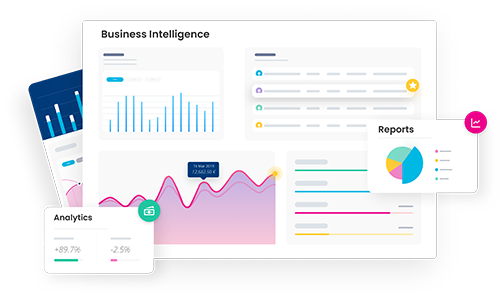
Real-time forecasting with integrated software
Getting a real-time 360-degree view on the business empowers not only you as a CFO but also teams individually to make more accurate and more comprehensive forecasts. Added benefit becomes from easy drill-down to more specific data. It allows the company to react faster if adjustments are needed as the data isn’t lagging behind.
To optimize this process, focus on streamlining the customer journey from lead acquisition to deal closure and incorporate key forecasting measures for sales, invoicing, costs, and time. Moreover, the power of integrated software plays a pivotal role. It makes forecasting not only possible but also more accurate when using integrated tools, further enhancing the overall efficiency and precision of the process.
Profitability Visibility and Control through real-time monitoring
Real-time project profitability monitoring is pivotal as it provides an immediate snapshot of project financial health, enabling swift identification and rectification of issues impacting profitability, thus enhancing operational efficiency.
With real-time insights, CFOs and teams can promptly address operational inefficiencies, ensuring that projects remain financially on track and operational processes are cost-effective.
What’s more, the data derived from real-time monitoring serves as a bedrock for strategic growth initiatives, aiding informed decision-making, and shaping investment strategies aligned with organizational growth objectives.
Step 6: Align Future Software Updates with the Company's Vision
From grasping the nuances of your industry to harnessing the power of automation and updating software, these steps are designed not just for immediate gains but for long-term strategic alignment.
Integrating software isn't a mere tech upgrade; it's about aligning every facet of operations with the company's forward strategy. It's essential that all team members understand, embrace, and champion this alignment.
By doing so, you not only elevate efficiency and deepen client relationships but also instill a culture of continuous improvement. In following this blueprint, you position your firm for success in your industry.
See streamlined workflows in action
Watch Heeros PSA product overview to see how your business could be run already today.
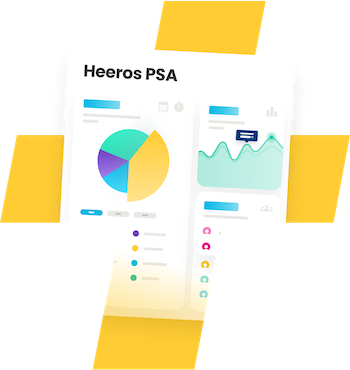
Time to boost your business?
Let's start by going through your current situation and needs, and then proceed towards the most suitable solution for you. Book a meeting with our sales or reach out to us by filling the form.

